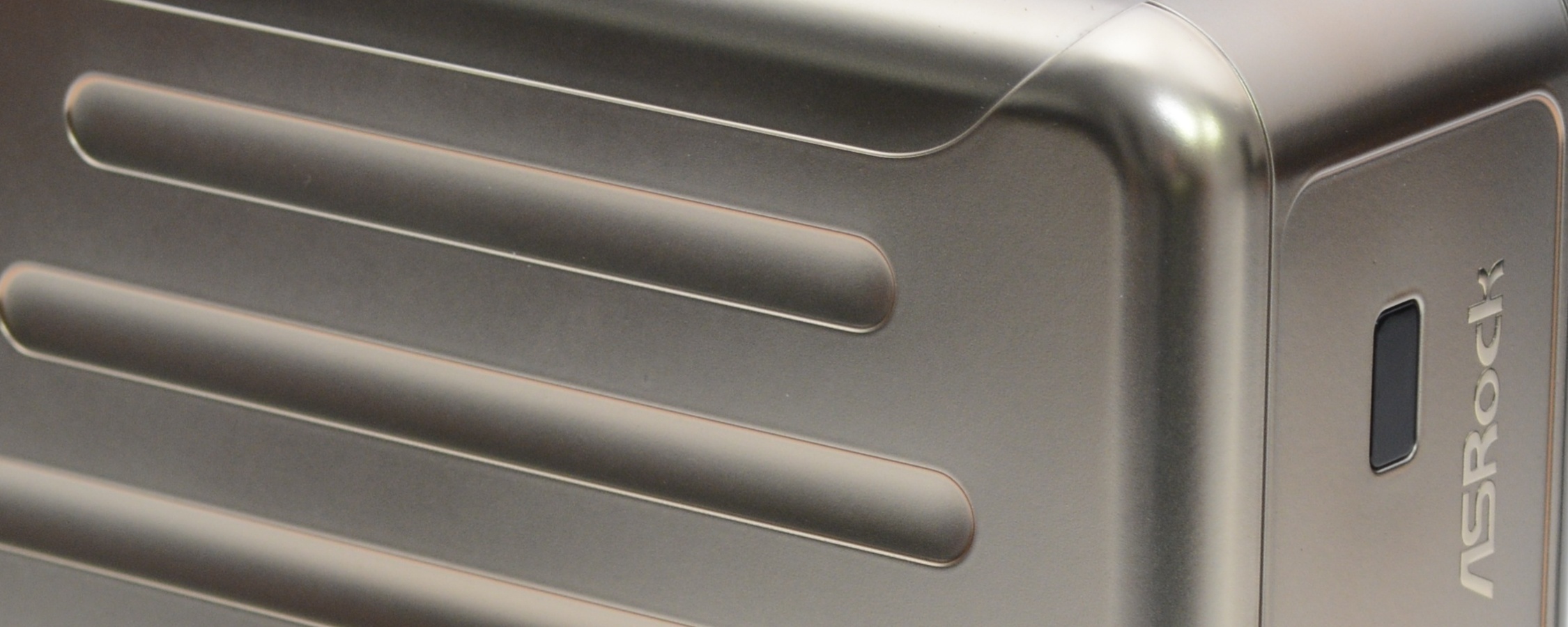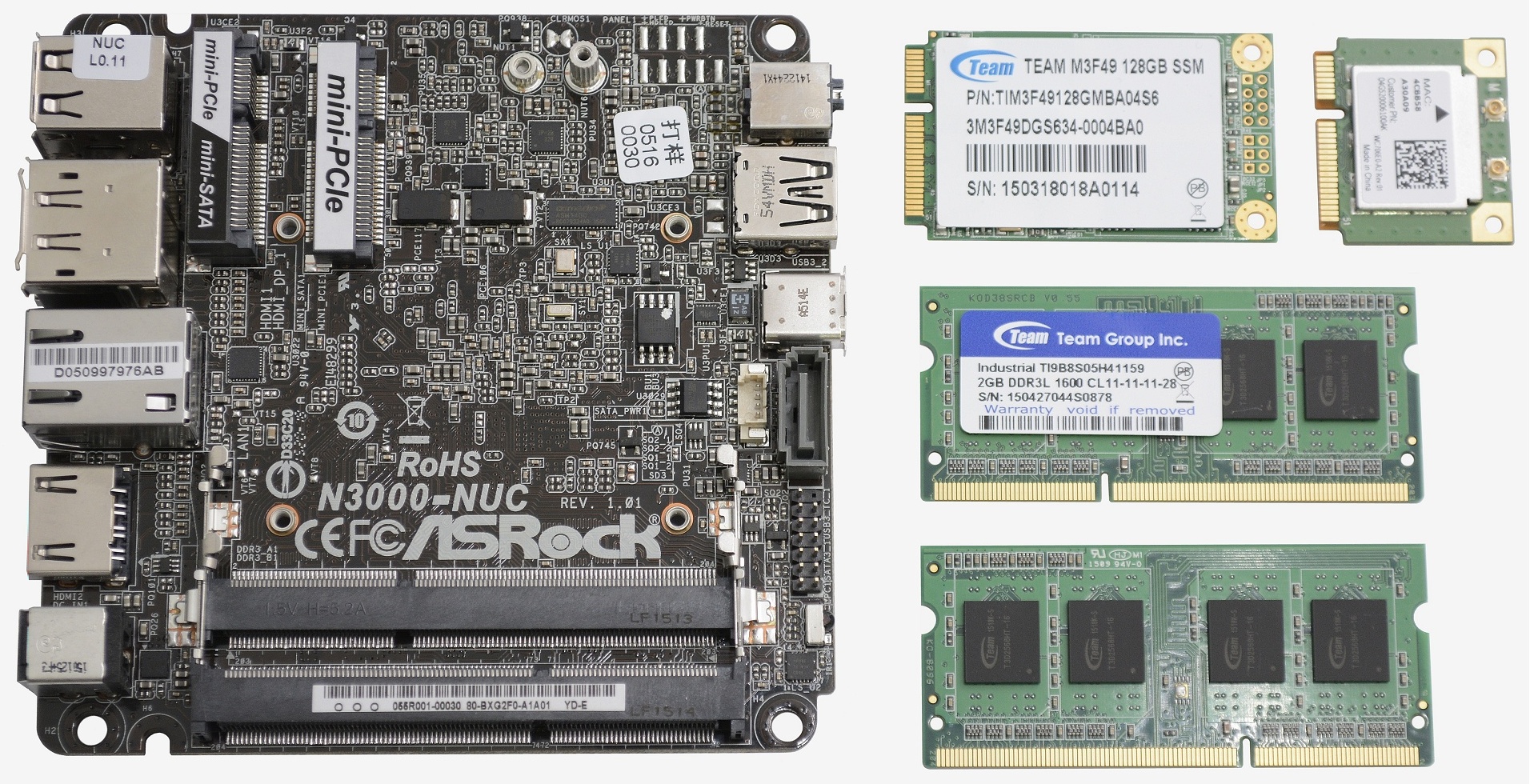Beebox Internals, It Isn't All Honey
At this point we should make mention of the fact that there are two different versions of the Beebox: one based on the Celeron N3000 and another using the Celeron N3150. Both are 14nm Airmont (Braswell) SoCs from the Cherry Trail line, though there is actually a significant difference between the two processors.
Whereas the Celeron N3000 is a dual-core with a base clock speed of 1.04GHz and a boost clock of 2.08GHz, the Celeron N3150 is actually a quad-core that operates at no less than 1.6GHz while it too can run up to 2.08GHz.
Performance-wise, the N3150 is considerably faster as you might expect given it has twice as many cores under the hood. Both use the Intel HD Graphics engine with 12 EUs clocked and the N3000 graphics engine is clocked at between 320 and 600MHz.
The key feature that allows the Beebox to extract the maximum performance from the Celeron N3000 is its dual-channel memory design. Using DDR3-1600 memory the N3000 delivers a bandwidth of roughly 6.8GB/s, whereas adding a second module for dual-channel operating boosts performance by over 20% to around 8.4GB/s.
Apparently this means the difference between seeing a slideshow and playing 4K content smoothly.
Another advantage to the dual SO-DIMM design is the fact that the Beebox can support up to 16GB of DDR3 memory. This is a nice feature though we feel 8GB could be considered overkill in this system so we're not sure who will be installing 16GB.
Compared to the ECS Liva X or Intel NUC DN2820FYKH, the Asrock Beebox offers considerably better storage support. Like the Liva X, there is an mSATA slot on offer but you also get support for a 2.5" drive as well, something the LivaX doesn't provide. Meanwhile, Intel's DN2820FYKH only supports 2.5" devices.
Ideally we see users outfitting the Beebox with a snappy 128-256GB mSATA SSD for their operating system and other applications with a secondary 1-2TB 2.5" drive for housing media. This is the perfect storage setup and it's one few budget mini PCs seem to get right.
Internally, the Beebox also features a much better design compared to mini PCs by ECS and Intel. With the bottom cover removed users have easy access to the mSATA slot, SO-DIMMs and the 2.5" drive location which is on the lid itself.
Removing the main PCB from the Beebox reveals a surprisingly large black heatsink on the rear side. On top of the heatsink is a large thermal pad which transfers heat from the heatsink to the aluminum chassis.
The case is wrapped in plastic which acts like more of an insulator of heat rather than a conductor, but because the Celeron N3000 produces such little heat the unit only ever gets warm to touch.
Inside our N3000 sample, which is the non-OS version, we found a Team Group M3F49 128GB SSD which is rated for a read throughput of 510MB/s and a 300MB/s write speed, so it will be interesting to see how it performs with the Celeron N3000. This SSD also comes in 32, 64 and 256GB capacities so it is highly likely the Windows 10 model which is listed as coming with a 32GB SSD also uses the M3F49.
The 4GB DDR3L-1600 memory kit also comes from Team Group, their Industrial TI9B8S05H41159 2GB CL11-11-11-28 modules have been used. Similar spec modules can be bought for between $15 and $20 each, taking the Beebox's memory bill to $40.
Finally we find a Mini-PCIe slot occupied by a small 802.11ac (2.4G/5G WiFi) module which also supports Bluetooth 4.0 and can moonlight as an access point if need be.




